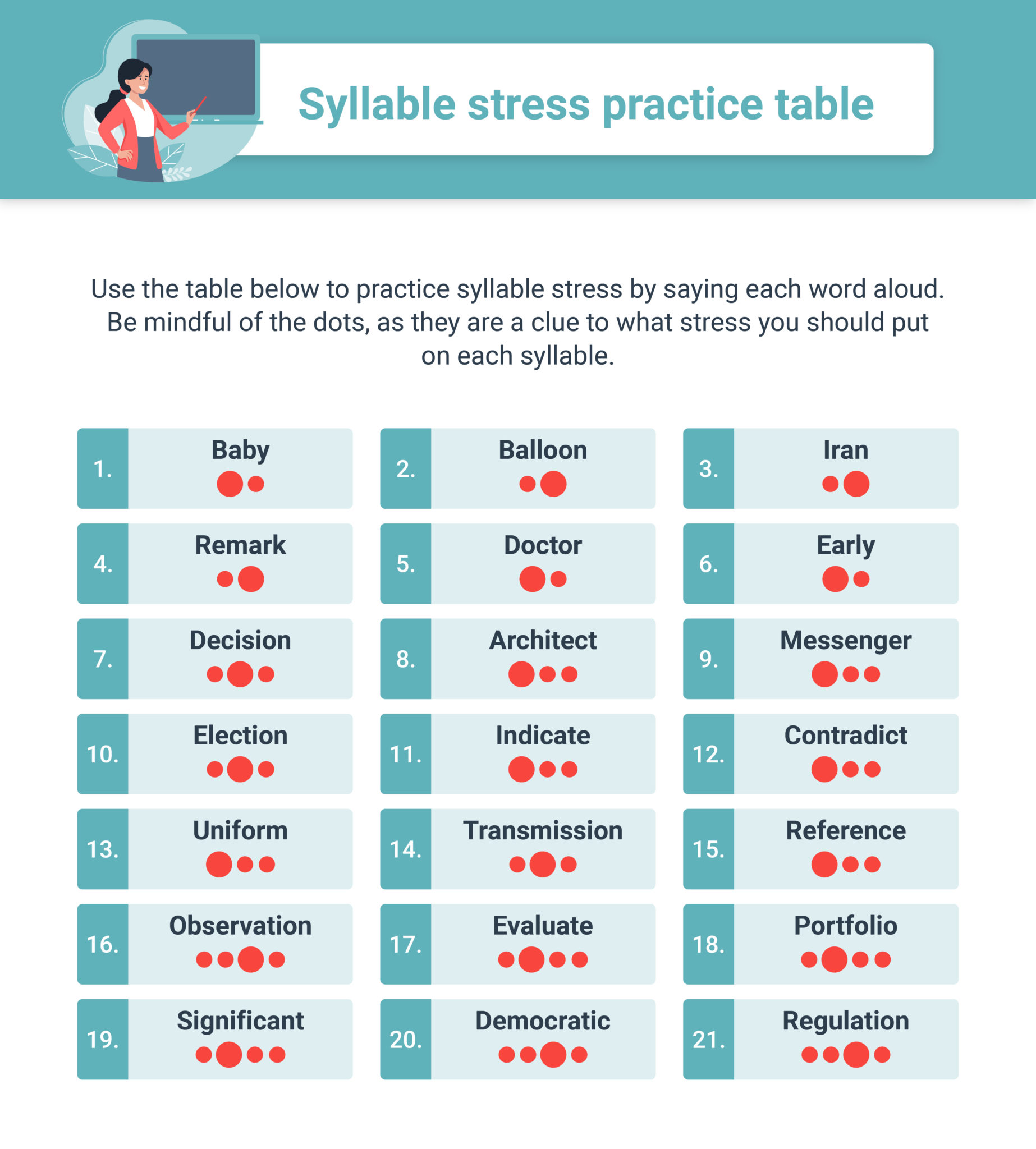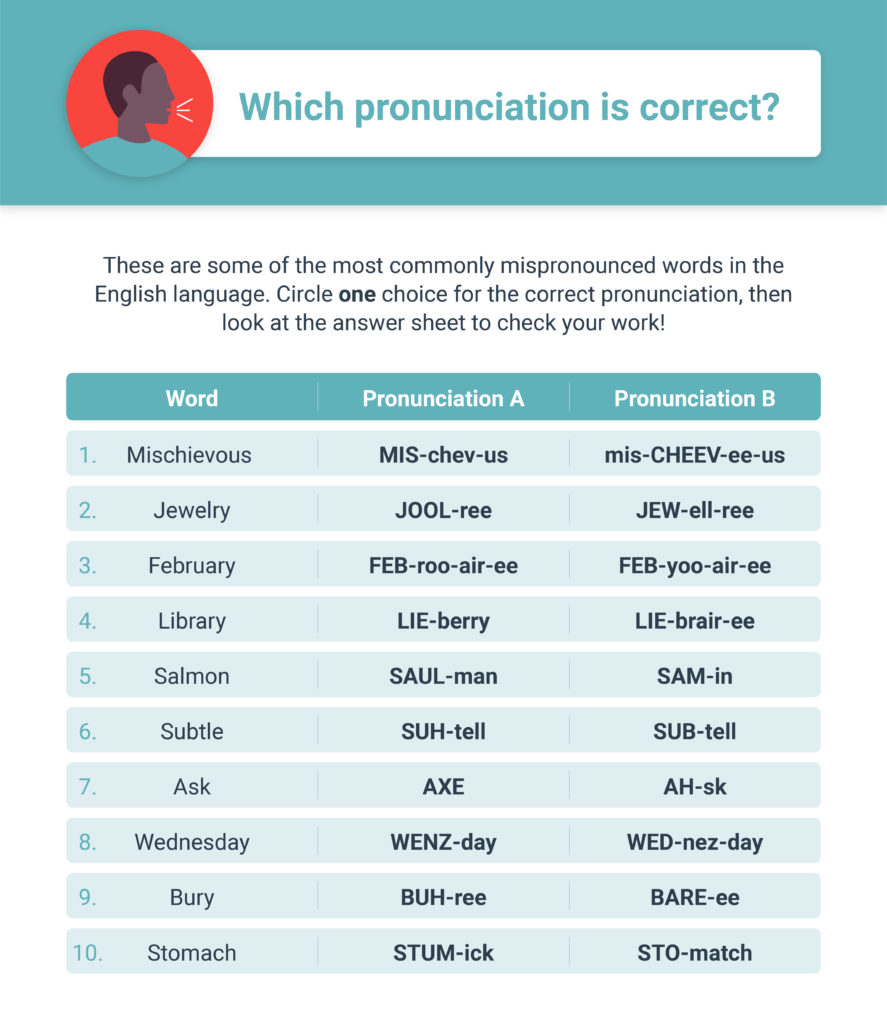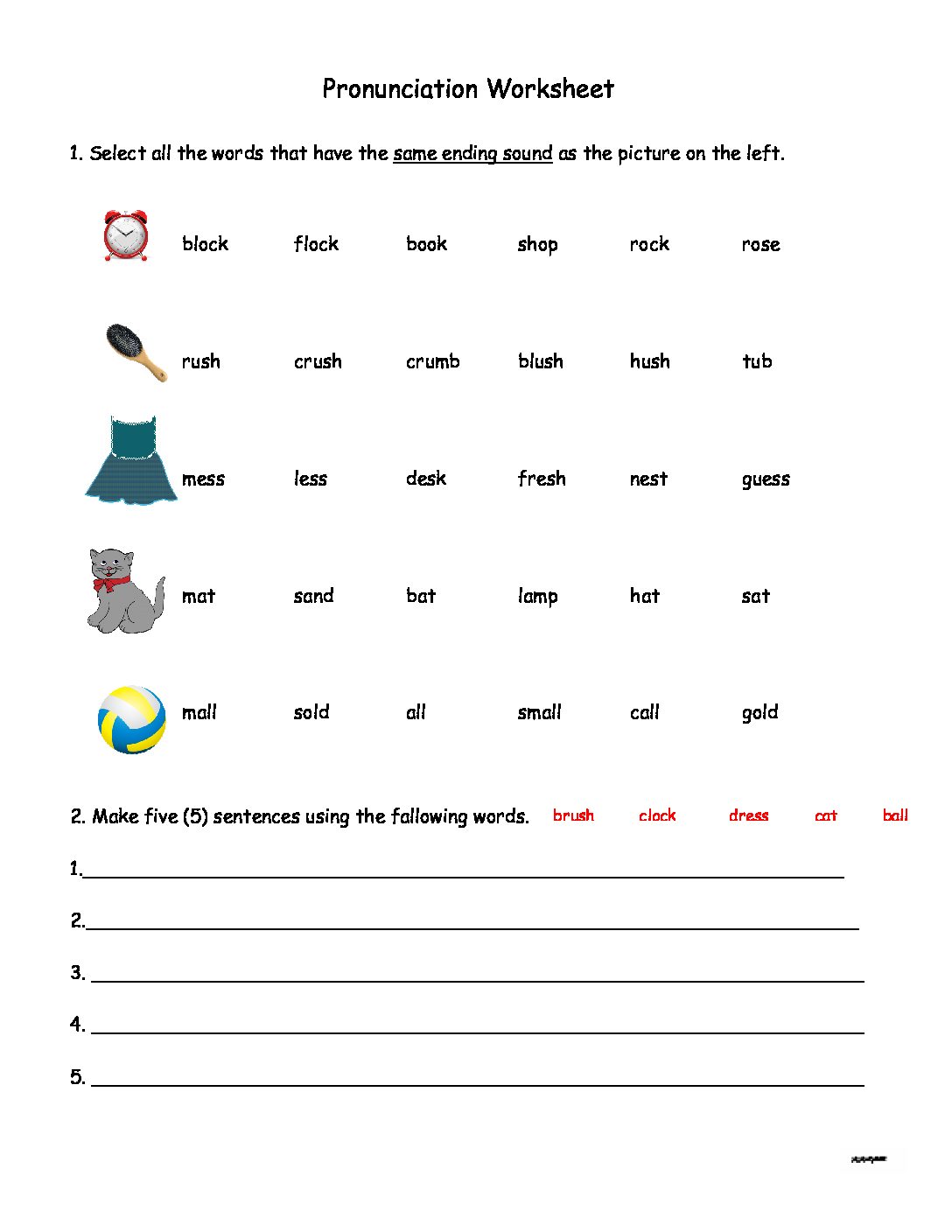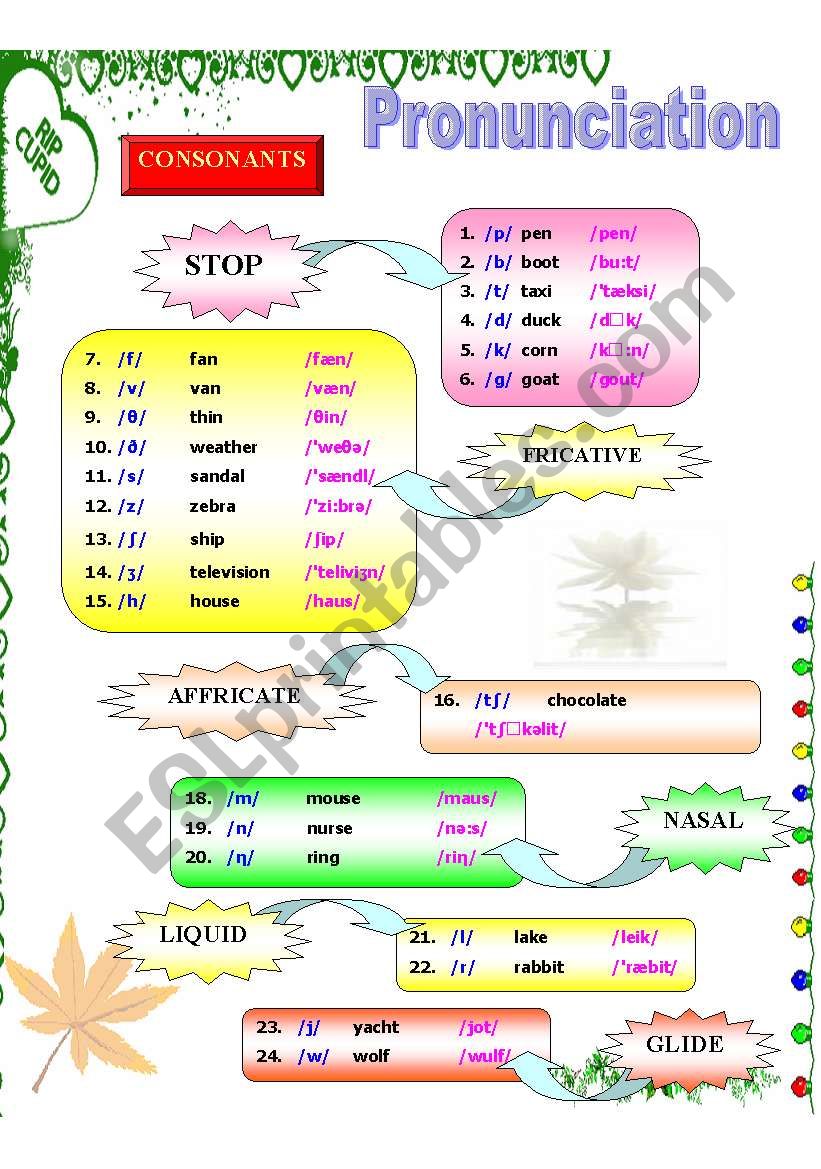
Mastering Spoken English: The Power of Pronunciation Exercises for ESL Worksheets
English, as a global lingua franca, connects billions of people across cultures and continents. While grammar, vocabulary, and listening comprehension are undeniably crucial components of language learning, one aspect often overlooked or underemphasized is pronunciation. For English as a Second Language (ESL) learners, accurate pronunciation is not merely about "sounding native"; it is fundamental to clear communication, mutual understanding, and ultimately, confidence. Mispronunciation can lead to misunderstandings, frustration, and a reluctance to speak, hindering the very purpose of learning a language. This is where the strategic implementation of Pronunciation exercises for ESL worksheets becomes not just beneficial, but essential.
The Indispensable Role of Pronunciation in ESL Learning

Before delving into the specifics of worksheets, it’s vital to understand why pronunciation holds such a pivotal position in ESL acquisition:

- Clarity and Comprehension: Even with perfect grammar and extensive vocabulary, poor pronunciation can render speech unintelligible. Listeners might struggle to grasp the intended message, leading to breakdowns in communication. Accurate pronunciation ensures that the speaker’s words are understood as intended.
- Confidence and Fluency: When ESL learners are confident in their pronunciation, they are more likely to speak freely and participate actively in conversations. This, in turn, boosts their overall fluency and reduces anxiety associated with speaking.
- Reducing Misunderstandings: Subtle differences in sounds can drastically alter the meaning of a word. For instance, the difference between "sheep" and "ship" or "live" and "leave" can lead to significant confusion. Pronunciation training helps differentiate these minimal pairs.
- Naturalness and Integration: While a native accent is not the goal for everyone, developing clear and natural-sounding English helps learners integrate more smoothly into English-speaking environments, whether social or professional.
- Improved Listening Skills: Understanding spoken English is intrinsically linked to understanding its sounds. By practicing producing sounds correctly, learners also train their ears to recognize these sounds when others speak, thereby enhancing their listening comprehension.



The Unsung Hero: Pronunciation Exercises for ESL Worksheets

Given the critical importance of pronunciation, how can ESL learners effectively improve this skill? While direct instruction from a teacher, listening to native speakers, and practicing conversation are all invaluable, Pronunciation exercises for ESL worksheets serve as an invaluable cornerstone for structured, repeatable, and self-paced learning. These worksheets offer a systematic approach to tackle the intricacies of English phonology, providing targeted practice that can be integrated into classroom settings or used independently for self-study.
Worksheets excel in their ability to isolate specific phonetic challenges, providing focused drills that might be difficult to incorporate organically into everyday conversation. They allow learners to concentrate on individual sounds, stress patterns, intonation contours, and rhythm, breaking down complex linguistic features into manageable, actionable tasks.

Types of Pronunciation Exercises Found in ESL Worksheets
Effective Pronunciation exercises for ESL worksheets encompass a diverse range of activities designed to address various aspects of English phonetics and phonology:

-

Minimal Pair Drills:
- Purpose: To help learners differentiate between similar-sounding words that vary by only one phoneme (sound). This is crucial for distinguishing between common confusions like /ɪ/ and /iː/ (e.g., "sit" vs. "seat"), /θ/ and /s/ (e.g., "think" vs. "sink"), or /v/ and /w/ (e.g., "vest" vs. "west").
- Worksheet Format: Often involves lists of minimal pairs for learners to read aloud, circle the word they hear from an audio prompt, or use in sentences to demonstrate understanding.
- Example:
- Listen and circle: "sheep" / "ship"
- Read aloud: "fan" – "van"
- Fill in the blank: "I need to sleep / slip." (Learner chooses based on context and practices pronunciation.)
-
Tongue Twisters:
- Purpose: To improve articulation, speed, and accuracy of specific sounds or sequences of sounds. They help learners develop muscle memory in the mouth, tongue, and lips.
- Worksheet Format: Presents various tongue twisters for repeated practice, often with instructions to start slow and gradually increase speed.
- Example: "Peter Piper picked a peck of pickled peppers." (Focuses on /p/ sounds)
- Example: "She sells seashells by the seashore." (Focuses on /ʃ/ and /s/ sounds)
-
Intonation and Stress Pattern Exercises:
- Purpose: English is a stress-timed language, meaning certain syllables and words are emphasized, affecting meaning and naturalness. Intonation (the rise and fall of voice) also conveys meaning (e.g., questions vs. statements).
- Worksheet Format:
- Marking stressed syllables in words (e.g., pho-TO-graph, PHO-to-graph-er).
- Drawing intonation arrows over sentences to indicate rising or falling tones (e.g., "Are you coming?" ↑ vs. "I’m coming." ↓).
- Identifying the meaning of sentences based on shifted stress (e.g., "I didn’t say he stole the money" vs. "I didn’t say he stole the money").
-
Rhythm and Linking Exercises:
- Purpose: To help learners achieve a more natural flow of speech. English words often link together, and unstressed syllables are reduced, creating a distinct rhythm.
- Worksheet Format:
- Sentences with marked linking sounds (e.g., "pick_it_up").
- Phrases for reduction practice (e.g., "going to" -> "gonna," "want to" -> "wanna").
- Reading passages aloud with emphasis on rhythm.
-
Vowel and Consonant Sound Drills (IPA Charts):
- Purpose: To systematically practice individual vowel and consonant sounds, often using the International Phonetic Alphabet (IPA) to provide a consistent visual representation of each sound.
- Worksheet Format:
- Lists of words categorized by a specific target sound (e.g., all words with the /ɔː/ sound like "thought," "walk," "door").
- IPA symbols with corresponding example words.
- Exercises to transcribe words into IPA or vice-versa.
-
Dictation and Listen-and-Repeat Exercises:
- Purpose: To train both listening and speaking skills simultaneously. Learners hear a sound or word and must reproduce it accurately.
- Worksheet Format:
- Audio prompts followed by blank spaces for learners to write what they hear.
- Sentences or phrases for learners to listen to and then repeat, focusing on mirroring pronunciation.
-
Role-Playing and Dialogue Practice:
- Purpose: To apply learned pronunciation skills in a more communicative and contextualized setting.
- Worksheet Format: Scripts for dialogues where specific sounds, stress, or intonation patterns are highlighted for practice. Learners can record themselves or practice with a partner.
Designing and Utilizing Effective Pronunciation Exercises for ESL Worksheets
For both teachers creating materials and learners using them, certain principles enhance the effectiveness of these worksheets:
- Inclusion of Audio Components: This is perhaps the most critical element. A worksheet without accompanying audio is significantly less effective. Learners need to hear the target sounds, words, and sentences pronounced correctly by a native speaker. QR codes, links to online audio files, or embedded media can facilitate this.
- Clear Instructions: Instructions should be simple, concise, and unambiguous.
- Variety: Mix different types of exercises to keep learners engaged and address various phonetic challenges.
- Scaffolding: Start with easier, more isolated sounds and gradually progress to more complex words, phrases, and sentences.
- Contextual Relevance: Whenever possible, use words and sentences that are relevant to the learners’ daily lives or academic/professional needs.
- Feedback Mechanisms: Encourage self-correction (e.g., "Record yourself and compare to the native speaker audio"), peer feedback, or teacher feedback.
- Visual Aids: Utilize phonetic charts (IPA), diagrams of mouth positions, or stress markings to aid understanding.
Benefits for Learners and Educators
The systematic use of Pronunciation exercises for ESL worksheets offers substantial benefits:
-
For Learners:
- Autonomy: Worksheets empower learners to practice independently, at their own pace, and focus on their specific areas of difficulty.
- Targeted Practice: They provide focused drills for sounds that are particularly challenging for speakers of certain L1s (first languages).
- Improved Listening: By actively producing sounds, learners become better at discerning them when listening to others.
- Increased Confidence: Consistent practice leads to improved pronunciation, which directly translates to greater confidence in speaking English.
- Foundation for Fluency: Clear pronunciation removes a major barrier to effective communication, allowing learners to focus on expressing their ideas.
-
For Educators:
- Resource Saving: Well-designed worksheets can be reused and adapted, saving preparation time.
- Structured Lessons: They provide a clear framework for teaching pronunciation systematically.
- Differentiation: Worksheets can be tailored to different proficiency levels and specific pronunciation challenges of individual students.
- Assessment Tools: They can be used to assess students’ progress in specific phonetic areas.
- Homework and Reinforcement: Worksheets are excellent for assigning homework, reinforcing classroom learning, and encouraging practice outside of class.
Maximizing the Impact of Pronunciation Worksheets
To truly leverage the power of these worksheets, learners should:
- Be Consistent: Regular, even short, practice sessions are more effective than sporadic long ones.
- Record Themselves: Use a phone or computer to record their speech and compare it to the native speaker audio. This self-assessment is incredibly powerful.
- Use a Mirror: Observe the mouth, lip, and tongue positions while practicing, comparing them to diagrams or videos.
- Focus on Problem Areas: Identify the sounds or patterns that are most challenging and dedicate extra time to those specific exercises.
- Seek Feedback: Don’t be afraid to ask teachers, native speakers, or even advanced peers for constructive criticism.
- Integrate with Other Skills: After practicing sounds in isolation, try to apply them in real conversations, presentations, or reading aloud.
Addressing Potential Challenges
While highly effective, there can be challenges. Lack of access to quality audio is a common one; however, many online resources, apps, and even AI-powered pronunciation tools can supplement worksheets. Motivation can also wane; gamifying exercises or setting small, achievable goals can help. It’s crucial for learners to understand that improvement is a gradual process and to celebrate small victories along the way.
Conclusion
In the journey of mastering English, pronunciation is not a luxury but a necessity. Pronunciation exercises for ESL worksheets offer a structured, versatile, and highly effective pathway for learners to conquer the complexities of English sounds, stress, and intonation. By providing targeted practice, fostering self-correction, and building confidence, these worksheets empower ESL learners to communicate with clarity and naturalness. For educators, they are indispensable tools for systematic instruction and reinforcement. Embracing these resources with consistent effort will undoubtedly lead to significant improvements in spoken English, opening doors to more effective communication and a richer language learning experience.
